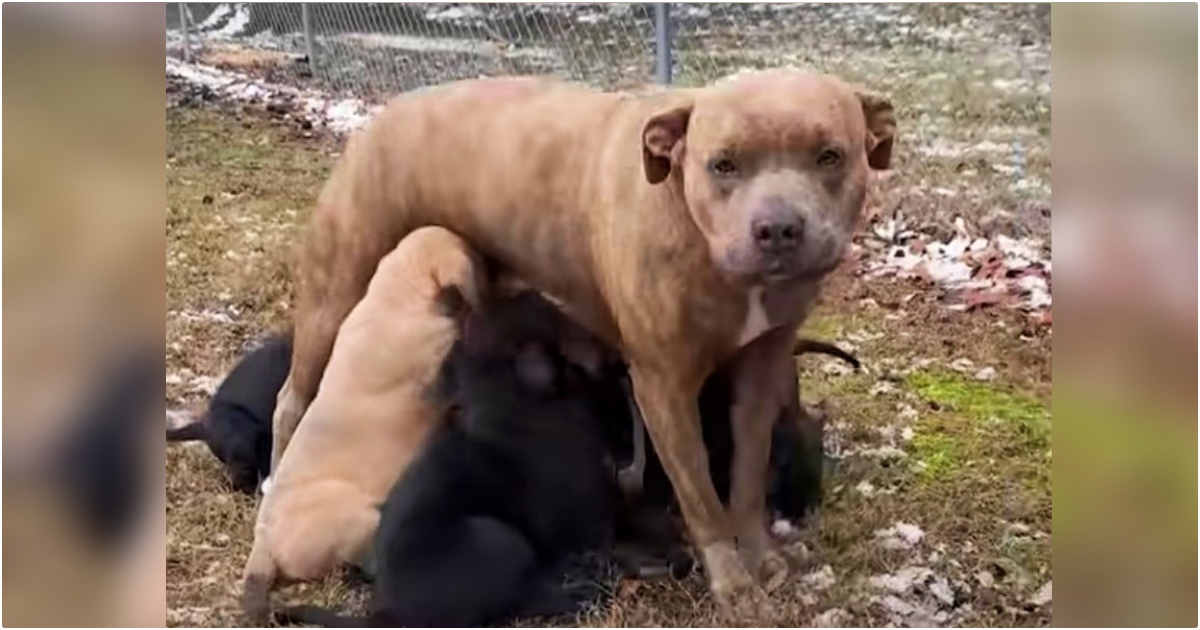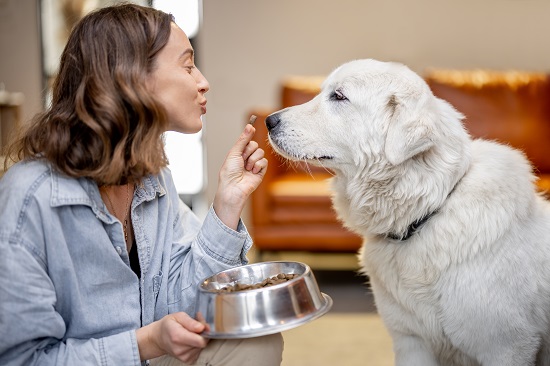With summer in full swing, many pet parents are excited to cool off with their dogs poolside or at the beach. However, prioritizing water safety is crucial, whether your pup is in or near a body of water. This season also brings higher temperatures, which adds to the signs you should look out for.
Below, we answer the following questions to help keep your dog safe and the summer vibes high:
CAN ALL DOGS SWIM?
The short answer is no. The doggy paddle may exist, but not all dogs may be pros. Some breeds, such as Labrador Retrievers, Portuguese Water Dogs, Newfoundlands, and Golden Retrievers, are better suited for swimming due to their physical characteristics, including webbed feet and water-repellent coats. However, breeds with shorter legs and flat faces, like bulldogs and pugs, may struggle to stay afloat or breathe comfortably in the water.
When determining whether your dog should swim, consider their breed, body type, age, and temperament. If your dog has physical limitations, is a puppy or senior with health conditions that may not be suitable for swimming (e.g., heart conditions, joint pain, etc.), or is easily anxious, it might be best to skip water activities and let them relax on the sidelines.
SHOULD I SUPERVISE MY DOG AROUND WATER?
Yes, itis essential to supervise your pup and never leave them unattended, even if they are not in the water or if they are experienced swimmers. Accidents can happen in an instant! For example, your dog might swallow too much water and suffer from water intoxication, injure themself on a sharp rock, or overheat if they don’t get enough shade. The variety of potential hazards requires you to watch them closely.
HOW CAN I MAKE MY POOL SAFE FOR MY DOG?
Hanging poolside this summer? Even if you’re at home, where conditions may be more controlled, water safety remains important.
Here are some tips to keep in mind if your dog will swim in the pool:
- Add a ramp or steps to give your pup easy access in and out of the pool
- Fence off your pool to prevent accidents and keep a safety cover over it when not in use
- Prevent your dog from drinking pool water, as it can include chlorine and other chemicals
CAN THE BEACH BE HAZARDOUS FOR DOGS?
Absolutely, the beach can be full of new and unfamiliar sights, sounds, and smells, which might make some dogs feel a bit uneasy or distracted. Additionally, there are some beach-specific hazards, including:
- Hot sand: Sand can heat up quickly in high temperatures, which can burn dogs’ paw pads or make it uncomfortable for them to rest on. Look for booties made with waterproof or water-resistant materials to help prevent this and avoid injury from sharp debris that may be in the water or that has washed ashore. Additionally, bring a beach towel for them to lie on and an umbrella to provide shade and help keep their environment cooler.
- Rip tides/currents: Always check for alerts before swimming, such as rips or large waves, as they can pull anyone in the water away from shore.
- Marine life & shells: From various species of fish and jellyfish to shells, it’s important to keep an eye out for anything in the water while your pup swims.
- Saltwater: Just like pool water, it is essential to prevent your dog from drinking saltwater. Drinking too much water, in general, can cause an electrolyte imbalance and diluted blood, but drinking saltwater can cause saltwater poisoning, which requires immediate vet attention.
- Parasites and Sand Ingestion: Sand might contain hookworms or roundworms, especially if other dogs have defecated nearby. Dogs that dig, roll, or lick themselves after contact with contaminated sand are at risk of picking up parasites. Ingesting large amounts of sand while playing can also lead to sand impaction, a painful and dangerous blockage in the intestines.
- Heat Stress and Sunburn: Dogs can overheat quickly, especially brachycephalic (flat-faced) breeds or dogs with dark or thick coats. Prolonged sun exposure can also cause sunburn, particularly on light-colored dogs or areas with less fur, like the nose and belly. Apply a pet-safe sunscreen and take frequent shade breaks.
ARE LAKES SAFE FOR DOGS TO SWIM IN?
It is crucial to supervise your dog, regardless of the body of water they’re near, and lakes are no exception. However, lakes can pose their own risks, especially if they contain certain bacteria, parasites, and other organisms.
For example, cyanobacteria (blue-green algae) typically found in warm, shallow, and stagnant water, can pose a risk. Drinking or swimming in water containing this organism is extremely toxic to dogs and can be irritating to their skin. Always look for large blooms or mats of algae before entering the water and look for posted advisories.
Additionally, you may commonly find certain wildlife in lakes, such as water snakes and leeches, which can be hazardous.
SHOULD MY DOG WEAR A LIFE JACKET?
Yes! Dog life jackets can be especially helpful when you’re with your pup near or in water. Just like humans, they offer protection and buoyancy that can help if they struggle to swim or get tired in the water.
It is important that your dog’s life jacket has a proper fit (not too loose or restrictive), is designed for their weight, has a handle to allow you to lift them out of the water quickly, and has a vibrant color to stand out in the water.
WHAT ARE THE WARNING SIGNS IF MY DOG IS IN TROUBLE IN THE WATER?
There can be several signs that your dog is experiencing distress in the water, as well as reasons why this may be happening.
- Drowning: Head is barely above water, coughing, swimming vertically with a lack of leg movements, gasping for air, frantic paddling, submersion in the water, etc.
- Overexertion: Slowed paddling, whining, excessive panting, lethargy (especially after they swim), drooling, lack of focus, etc.
- Water aspiration: Coughing, labored breathing, noisy breathing, lethargy
- Loss of appetite, dehydration, and vomiting are also signs to look for after they swim, which could indicate aspiration.
CAN DOGS GET HEATSTROKE WHILE THEY SWIM?
Yes, even if the water temperature is cool, dogs can still get heatstroke while swimming. They can overexert themselves from too much activity (before entering the water or while in the water), causing their internal body temperature to rise. The weather may also be too hot, and they may get excessive sun exposure, causing heatstroke. Dogs with health conditions may also be more susceptible.
Some of the signs of heatstroke to look for, even if they’re in the water:
- Heavy and fast panting
- Very red gums or tongue
- Thick drool or foaming
- Weakness/lethargy
- Vomiting or diarrhea
To prevent heatstroke while swimming:
- Take regular breaks
- Avoid swimming in peak hours during the hottest part of the day (usually mid to late afternoon)
- Bring fresh, cool water to drink (but never give ice water/ice cubes if you suspect your dog is overheating or has heatstroke, as this can possibly lead to shock or constricted blood vessels)
- Always supervise them and watch for any signs of overheating
If you suspect your dog has heatstroke, it is crucial that you bring them to a vet immediately.
READ MORE: Summer Heat Safety for Dogs
WHAT SHOULD I LOOK FOR AFTER MY DOG GOES SWIMMING?
After your dog is out of the water, there are several steps you can do to keep them clean and feeling their best:
- Dry your dog’s ears: While swimming, water can become trapped in their ears, potentially leading to infection. Carefully drying with a soft towel can usually do the trick.
- Rinse thoroughly: A dog’s coat/hair can trap chlorine, bacteria, or debris that may have been in the water, making it necessary to rinse and dry them off from nose to tail.
- Check paws: Look for cuts or burns that may have occurred while they were in the sun or on the sand/grass.
BRING YOUR DOG TO DOGTOPIA THIS SUMMER
Spending time in the water can be a fun summer activity, but for those days when it’s too hot for your pup to get adequate exercise or you’re planning a beach trip where it’s not the right environment for your dog to join you, daycare at Dogtopia can be a great solution.
We have temperature-controlled indoor playrooms that keep pups cool while they play and exercise with like-minded friends. Contact your nearest location today to schedule their visit!
This blog was reviewed/edited by Dogtopia’s Director of Health & Safety Lorraine Rhoads, an experienced animal biologist and environmental scientist.











